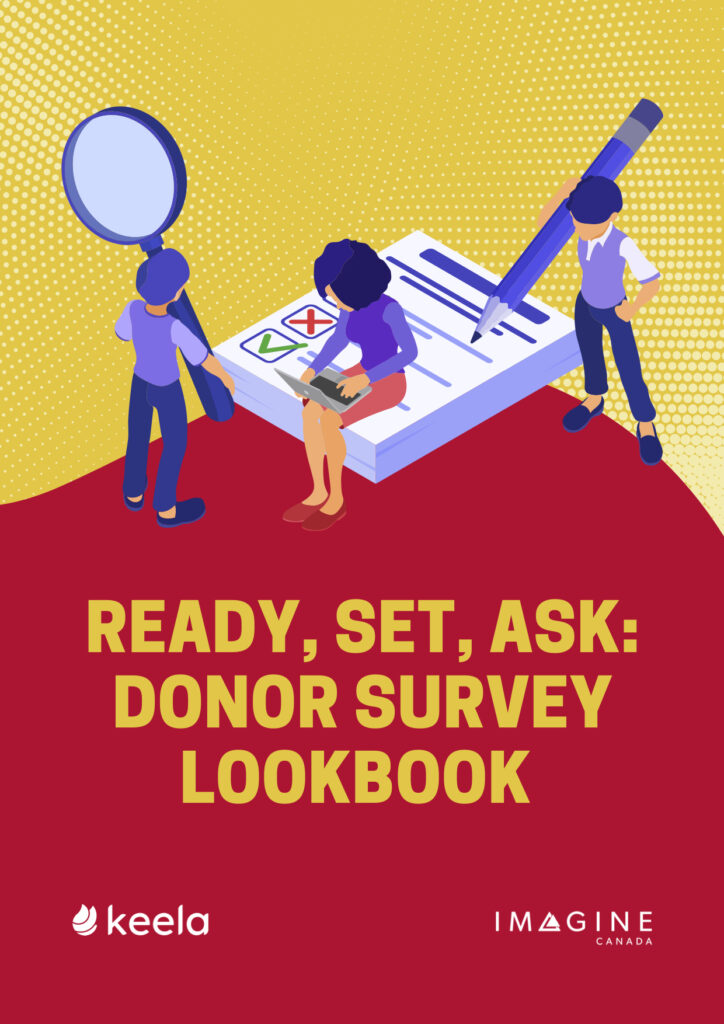Donor Satisfaction Surveys – A How-To Guide


It seems that no one can agree on who said it first, but it’s undeniable that knowledge is power.
As a nonprofit organization, the more you know about your donor base, the more you are able to tailor your messaging and programs to encourage loyalty and enthusiasm for the important work you do. But how can you learn about your donors?
You can definitely track donation habits, location data, and other useful metrics in your handy Keela CRM. But what if you want to dig deeper, learn more, and get personal with your donors?
If that’s the case, it’s probably time to start sending donor satisfaction surveys.


Get Access to FREE Donor Survey Templates
This lookbook contains three common surveys to send to your donors including the questions, answers, and suggested formatting. Use this lookbook to start gathering important information about your donors.
Why Send Donor Satisfaction Surveys?
Donor satisfaction surveys are one of the best ways to gain true insight into the minds of your donors.
Depending on what you ask in your questionnaire, you may be privy to revelations about why your donors give to you, how they choose where to give their hard-earned money, and what type of relationship they want to have with your organization.
You may also learn about logistical preferences that help you plan events and programs more successfully in the future.
Combined with demographic information, you may be able to establish trends, create donor categories, and deliver your message more accurately and with better responses, ultimately reaching more donors and improving your bottom line.
How to Write Your Donor Survey
Creating a donor survey is something that needs to be done with the lens of your individual nonprofit in mind. You will find some websites that tell you exactly what questions to ask on your online surveys to get guaranteed results. But those results are only going to tell you what that blog writer thought was important at the time; he doesn’t know what you’re interested in.
1. Set a goal
No one knows your organization better than you (remember: knowledge is power), and only you know where there are gaps in your knowledge. So you should try to write a survey that fills those gaps. This means you need to set a goal.
By setting a goal for your survey, you can stay focused on gaining the donor feedback that you need. Perhaps you want to know how people feel in general about your organization; maybe you want to know specifically how attendees felt about the lunch at your last event. The degree of precision is up to you, just stick to questions that serve your objective.
A goal also keeps your questionnaire from spiraling out of control. Few donors want to answer 87 questions about their experience. Ask only the questions that you need to fill your knowledge gaps. That may be ten questions, or it could be just one or two.
2. Think about your tone of voice
Remember that survey respondents are doing you a favor, so be respectful of your time: be direct, brief, friendly, and transparent, and keep your questions simple. Having to look up words or parse a complicated sentence could be detrimental to the number of responses you get.
3. Structure Questions Strategically
Also, think carefully about how you structure your questions. Answers can be open-ended, multiple-choice, yes or no, or on a scale; be sure that the answer type fits the question you’ve asked.
For example, don’t give respondents the option to type five hundred characters into an answer field if you only want a yes or no answer.
4. Consider asking these kinds of Questions
a. Why do you donate to our organization?
This is a great question for many surveys because it helps you understand how donors talk about your cause and think about their giving. It’s best to ask this one with an open-ended structure so that donors feel comfortable giving a lengthy answer and you get as much insight as possible into their thinking.
It will also help you understand how to recalibrate your donor stewardship strategies as you’ll know what updates they want to hear about, or what campaigns they most resonate with.
b. Demographic Questions
If you’re missing a piece of demographic information about your donors that would really help you target your next campaign, don’t be shy, go ahead and ask. It’s valuable feedback and even privacy-conscious donors will likely be willing to share some details about their ages, locations, etc.
c. Specific Questions
Don’t hesitate to ask very specific questions.
Would you attend more events if they were held on Saturdays instead of Sundays? Do you think the lunch portions were big enough? Did you rent a bicycle or bring your own?
Not every answer needs to be a philosophical treatise.
d. Is there anything else you’d like us to know?
This is a great question to complete the survey with, because you may discover an answer to a question you didn’t think to ask. Be careful though, as leaving an open-ended question means you may get an earful about some things far outside the goal of your survey.
Alternative versions of this question include “What can we do to improve?” and “Do you have any questions about our organization?” Skip questions like this on very short or very specific surveys.
Donor Survey Best Practices
- Send a survey soon after an event: If you’ve hosted an event, be sure to send your survey about that event as soon as you can so that it is still fresh in respondents’ minds.
- Send annual surveys: Checking in each year is a great way to stay in touch and likely won’t feel like too much communication for most people. Plus, many donors only give once a year, so more frequent surveys won’t get you any new insight.
- Make it part of your marketing plan: Make surveys part of the data gathering and outreach portions of your nonprofit marketing plan to make sure costs get rolled into your budget, to keep you on schedule, and to give you plenty of notice to plan the next survey.
- Give enough time for people to respond: If you send a survey but don’t hear from anyone the next day, don’t give up hope! Two or three weeks is enough time to give people a chance to fit you into their busy schedules and give thoughtful answers.
How to Send Your Donor Survey
Now that you’ve set a goal and written a great questionnaire, it’s time to fire off your survey to your donors. There are many survey tools, so choose a method that your donors are used to:
- Mail: While less popular than it once was, mail can still be effective with older donors. Be sure to account for postage costs in your plan.
- SurveyMonkey, Typeform, Google Forms: If you’re conducting a donor survey via email, why not use a platform that does the heavy lifting for you? Services like these let you write and structure your survey, send it out to an email list, then tabulate the responses automatically, all from one place.
- Facebook: The world’s most pervasive social network has introduced Facebook Surveys, a simple way to reach out to your followers and ask them for info. Facebook Surveys are best suited to nonprofits with large online communities and surveys with a small number of questions.
Send Personalized, Compliant Emails using Keela
Get a glimpse of how Keela’s suite of email marketing tools can help build and send engaging emails to your donors and supporters.
Interpreting the Data
Once you’ve gotten some responses back, you can begin to look at the answers and draw conclusions.
Look for recurring themes: If 80% of respondents said they hated not being offered a vegan option at your last event, it might be time to consider the bean burgers.
- Try to segment: If responses to a question seem to be split down the middle, see if you can associate the answers to a demographic data point to create segments. You may find, for example, that people in one age group prefer to donate at Christmas, and another age group gives during tax season. More segments help you tailor different messages for subgroups within your donor base.
- Watch for trends: If you’ve sent several surveys, look for trends across surveys. For example, if you noticed a 10% reduction in preference for sports drinks at your fun run each year for the last three years, you may decide to opt for water only in a few years in order to reduce your event’s overhead costs.
- Follow up if you can: If your survey included contact information, you may want to follow up with donors to dig into some of their answers. You may get deeper insights and it’s great for building relationships with your supporters.
- Beware of the negativity bias: When it comes to surveys, one bad apple doesn’t spoil the whole bunch, but it can sure feel like it. Try not to fixate on negative responses; instead, let the numbers tell the real story and believe the results when the majority of answers are positive. You’re doing a great job!
Now get out there and ask questions, learn more about your donors, and figure out how to better convey the valuable work you do. Knowledge is power!


